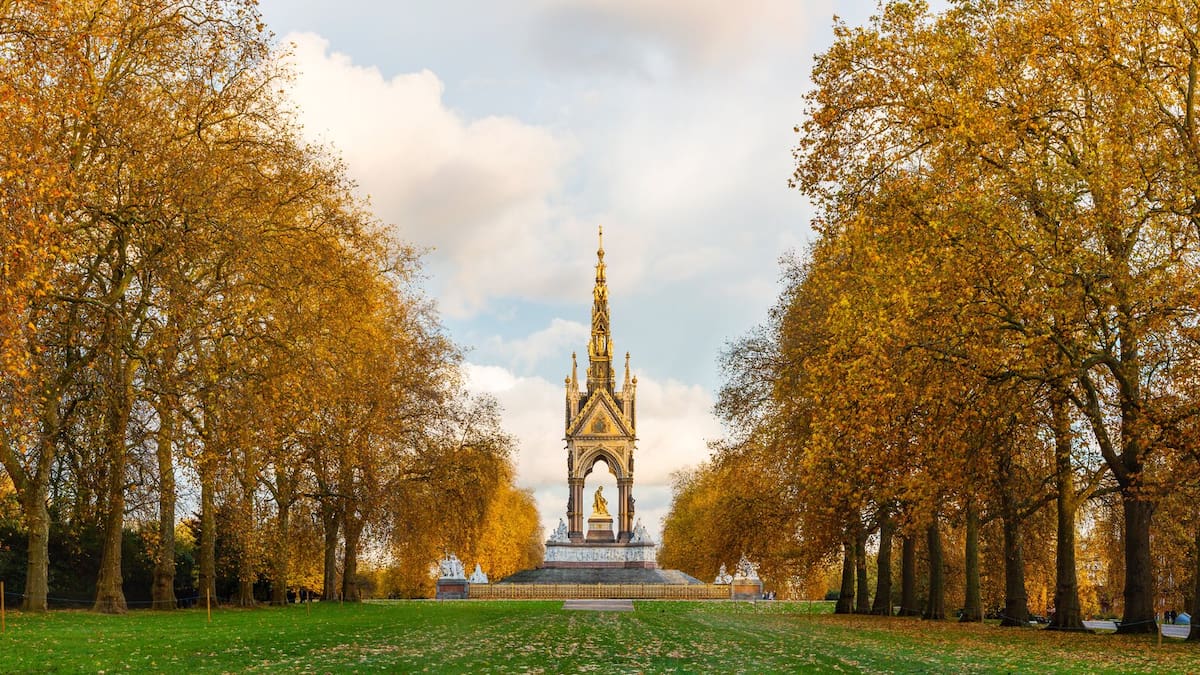St James Park is bordered by three royal palaces, blooming through generations of monarchs. Photo / London and Partners
It’s not the only London park enjoying a spruce-up. Last June, Finsbury Circus Gardens, London’s first public park and one with a Grade II listing, reopened following a two-year makeover. The park, laid out in the 1600s, is the largest green space inside the Square Mile (the heart of the original City of London), and its makeover involved the addition of 13,000 plants chosen to boost diversity and attract birds, bees and bats.
Soho Square is a historic garden named after King Charles II. Photo / Tamara Hinson
In the 1800s, London was a somewhat squalid place to live, and many of its most famous green spaces were for the wealthy. Take Regent’s Park, filled with 12,000 roses and laid out by John Nash, who added grand villas and elevated terraces, designed with the upper classes’ love of promenading in mind.
Meanwhile, the richest of the rich simply basked in their own private gardens. One exception was Sir Sydney Waterlow. “In the late 1800s, he inherited the family printing business and became a wealthy banker as well as Lord Mayor of London,” says Dr Paul Rabbitts, a historian and expert on London’s parks. “He gave his land to London County Council in 1889, with the intention that it should become a ‘garden for the gardenless’. The result was Waterlow Park in Highgate, North London. Today, a bronze statue of Waterlow can be found in the park, a hilly green space with fantastic views across the capital.
Other parks have even more surprising origins. “The square mile has hundreds of green spaces, including many former burial grounds which were converted into the city’s first ‘pocket parks,’” says Katie Wignall, a tour guide and founder of Look Up London. “Many Londoners aren’t aware of these charming places. My favourites include Christchurch Greyfriars Church Garden and St Dunstan in the East.”
Greenwich Hill offers an expanse bed of green and a mesmerizing view of the London skyline. Photo / London and Partners
That said, don’t discount the big hitters. Rabbitts points out that they’re filled with hidden corners which are often overlooked. “Hampstead Heath has the fabulous Hill Garden and Pergola on the edge of the West Heath, which is tucked away and has a wonderful secretive feel to it,” says Rabbitts. “Another fine example is Regent’s Park’s St John’s Lodge Garden, to the north of the park’s Inner Circle area. This is where you’ll find a secret garden with sculptures, exotic plants and bubbling fountains. It was designed to be a garden ‘fit for meditation’ and was laid out by Robert Weir Shultz in 1889. Yet many visitors to London’s parks are unaware of its existence.”
The Greenwich Hill Vista. Photo / London and Partners
Hyde Park offers further proof that even the biggest green spaces have hidden corners. “Peek through the railings on Bayswater Rd by Victoria Gate,” suggests Wignall at Look Up London. “You can see row upon row of tiny tombstones which make up a pet cemetery established in Hyde Park in the 1880s.” For a history fix, this particular park is certainly hard to beat.
“Many important events and individuals are commemorated here,” points out Darren Share, director of parks at London’s Royal Parks. “Head east from Hyde Park’s Serpentine lake and you’ll find Britain’s first memorial to the victims of the Holocaust. Surrounded by pretty birch trees, it provides a quiet place of contemplation for visitors. The park is also home to the Diana Memorial Fountain, opened in 2004 as a tribute to Diana, Princess of Wales.”
The Buckingham Palace is just a few metres away from St James Park. Photo / Tamara Hinson
Other landmarks are easier to miss. In St James’s Park, metres from Buckingham Palace, one of the smallest buildings is Duck Keeper’s Cottage, a picturesque Victorian home for the person who once looked after the park’s birds. I recommend visiting this part of the park at dusk, when it’s highly likely you’ll glimpse pipistrelle bats flitting between the trees. See? I told you pigeons were boring.

